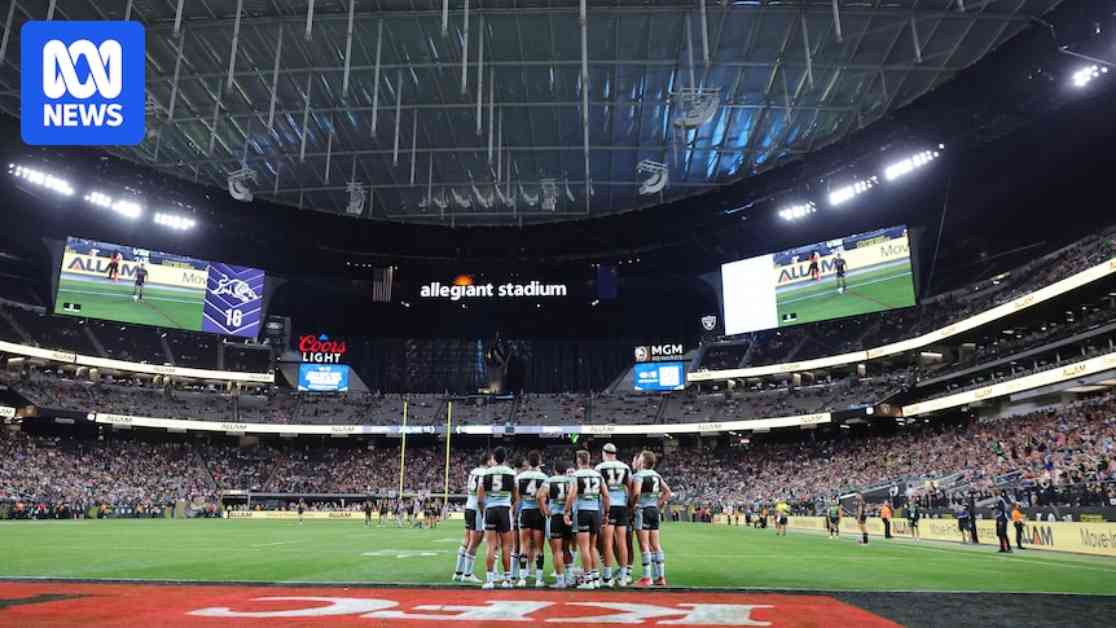The National Rugby League (NRL) is at a crossroads regarding its Las Vegas program, contemplating reducing the number of games from four to three next year due to fluctuating crowd numbers. The recent Vegas venture saw a diverse lineup of matches, including NRL fixtures, a Super League clash, and a women’s Test match, drawing a total of 45,209 fans to Allegiant Stadium.
The 2025 program attracted fans from far and wide, with supporters from England making the journey to witness their national women’s team take on Australia and a thrilling Super League showdown between Wigan and Warrington. However, the prolonged duration of the event posed challenges for some attendees. Allegiant Stadium’s policy of not allowing pass-outs meant that fans who arrived early for the first game and departed after the final match endured a marathon nine hours at the venue.
As the day progressed, the crowd size fluctuated, peaking during the NRL clash between Canberra and the Warriors before gradually dwindling during the subsequent matches. The final showdown between Cronulla and Penrith, anticipated to be the highlight of the day, saw visibly empty stands, highlighting the issue of spectator retention throughout the event.
Australian Rugby League chair Peter V’landys acknowledged the need for adjustments in response to fan feedback, revealing plans to reduce the number of games for the upcoming Vegas visit. “We’re looking at three next year,” V’landys disclosed, citing concerns regarding the extended duration of the event leading to fans departing after their preferred teams had played.
The logistical challenge of spreading the games across two days was also deemed impractical due to the associated financial implications. This decision underscores the NRL’s commitment to striking a balance between fan experience and operational feasibility as they navigate the future of the Las Vegas program.
The influx of English supporters for the Super League fixture between Wigan and Warrington underscored the international appeal of the event. Additionally, interest from teams like St George Illawarra, Canterbury, Newcastle, and North Queensland to participate in future Vegas matches signals the growing global reach of the NRL.
Furthermore, considerations are being made to enhance the women’s game presence in the US market, following the dominant performance of the Australian Jillaroos against England. Suggestions to pit the Jillaroos against New Zealand or host a women’s State of Origin match aim to elevate the competitiveness and viewership of women’s rugby league on the international stage.
In a bid to diversify the event lineup, Penrith coach Ivan Cleary advocates for incorporating the World Club Challenge into the Vegas program. This move could potentially streamline the schedule by featuring clashes between NRL and Super League champions, catering to both leagues’ fan bases while injecting a fresh element of competition and prestige into the event.
As the NRL grapples with the evolving landscape of international rugby league, strategic decisions regarding the Las Vegas program will shape the future of the sport’s global expansion. Balancing fan engagement, logistical considerations, and competitive matchups will be paramount in ensuring the continued success and appeal of the NRL on the world stage.

















